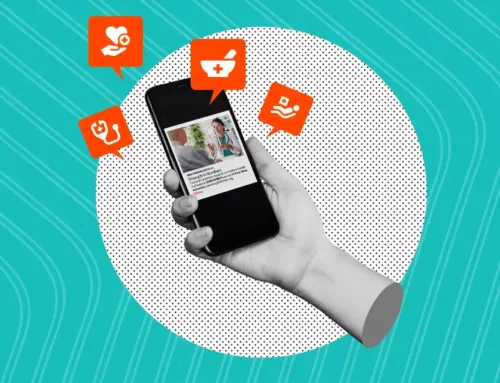If you or your business is feeling the pinch from labor shortages, you’re not alone. The Great Resignation or Big Quit, as it’s come to be called, is far from over. In fact, the Bureau of Labor Statistics reported that 4.3 million Americans quit their jobs in December, adding to the more than 35 million who have left their jobs since the start of 2021.
Without getting into the reasons why so many people are quitting, suffice to say the power in the labor-employer dynamic has shifted from hiring managers to job seekers. That means organizations are going to have to work harder – and smarter – to hire top-tier talent.
So what does this have to do with marketing? Quite a bit, actually.
While marketing departments obviously don’t have control over things like compensation and benefits, the work they do is often a person’s first line of sight into an organization. Making recruitment marketing part of your short- and long-term HR strategy can help job seekers find, learn about and ultimately engage with your business.
Here are some tips to help you get started.
Know Your Story
Obviously you know your story from your customer’s perspective, but have you thought about how that translates to current and prospective employees?
For instance, we market ourselves to clients as “A creative, multichannel marketing agency of passionate pros focused on one single mission: delivering measurable results.” But from a recruiting perspective, that would look something like, “We’re smart, curious creative-thinkers who love to do good work for our clients – but are encouraged in their pursuit to do better.”
Knowing your internal story helps you attract the attention of like-minded individuals who will integrate easily into your company’s culture.
Create a Careers Page
Careers pages serve a couple key purposes.
First, and most obviously, it serves as a hub for prospects to learn more about your organization, available positions and responsibilities and requirements of those positions. While job descriptions explain what one would do within a given role, a good careers page explains why one would want that role within your organization. By highlighting things like goals, growth, benefits and culture, you’re helping prospects imagine how they integrate into your company long-term.
Second, it can help streamline the hiring process. A recent study found that 54 percent of Gen Z, 51 percent of employed Millennials, 42 percent of student Millennials and 37 percent of Gen X job seekers simply won’t apply if they feel your recruitment methods are outdated. This means easy online applications, integrating technology (like software to schedule interviews), and clear communication/expectations post-application.
Finally, it can help keep your recruitment pipeline full. Even a simple web form can collect applicant data and open valuable communication channels. Though some candidates might not be the right fit now, they may be should a position become available in the future. When layered with a content or email marketing strategy, you can keep them engaged until that time.
And, while you’re at it…
Optimize Your Website
True for prospective customers and employees alike, people won’t join you if they can’t find you. Keeping your site up-to-date, keywords relevant, and on point meta data will go a long way toward keeping your company’s website riding high on the SERPs.
Also, pay special attention to mobile-friendliness. While many job-seekers apply for positions using their mobile devices – a significant number would specifically not apply for a job because a company’s application process wasn’t easy or accessible on a mobile device.
Build a Social Presence
It’s no secret that recruitment has trended toward digital. As Gen Z enters the workforce, you now have multiple generations of digital natives using online platforms to find, vet and apply for jobs. That’s why talent marketing on social media is such an important component of your larger recruitment marketing strategy.
A 2021 study by CareerArc found that 86 percent of job seekers say they use social media for their job search. While LinkedIn has long been the leader in this realm, having a presence on other major social media platforms like Facebook, Twitter, YouTube and Instagram, are important touch points for prospects looking to verify your organization’s culture and values.
Consider a Recruitment Marketing Strategy
Some positions are harder to hire for than others – in particular, those requiring specialized skills or experiencing high turnover rates. As the competition for candidates heats up, your organization might need to adopt a tactical, multi-pronged approach to keep the talent pipelines full.
While recruitment marketing is not the same as recruiting, recruiting can be a part of your recruitment marketing strategy. Think of it kind of like the relationship between outbound sales and inbound marketing.
Recruiting is an active process that involves finding, vetting and hiring potential candidates for a specific job. This can mean working contacts for referrals or scouring social media for prospects, the intent is to fill a specific position at a specific time. It’s a lot like outbound sales in that you’re establishing credibility, building rapport and educating prospects to warm candidate leads.
On the opposite end, we have recruitment marketing. Like inbound marketing, it’s a long game approach that relies on using data and audience segmentation to provide the kinds of information a prospect needs in order to make an educated decision, where and when they need it. This can be on your website, in targeted digital advertising, part of your content marketing strategy – you name it. The idea is to create a cohesive web of touch points that allow you to actively vet candidates as they passively engage with your company.
Sounds like a bit more than your internal team can handle? A proven marketing partner – ahem, like Responsory – can help you build out, manage and optimize your recruitment marketing strategy.






